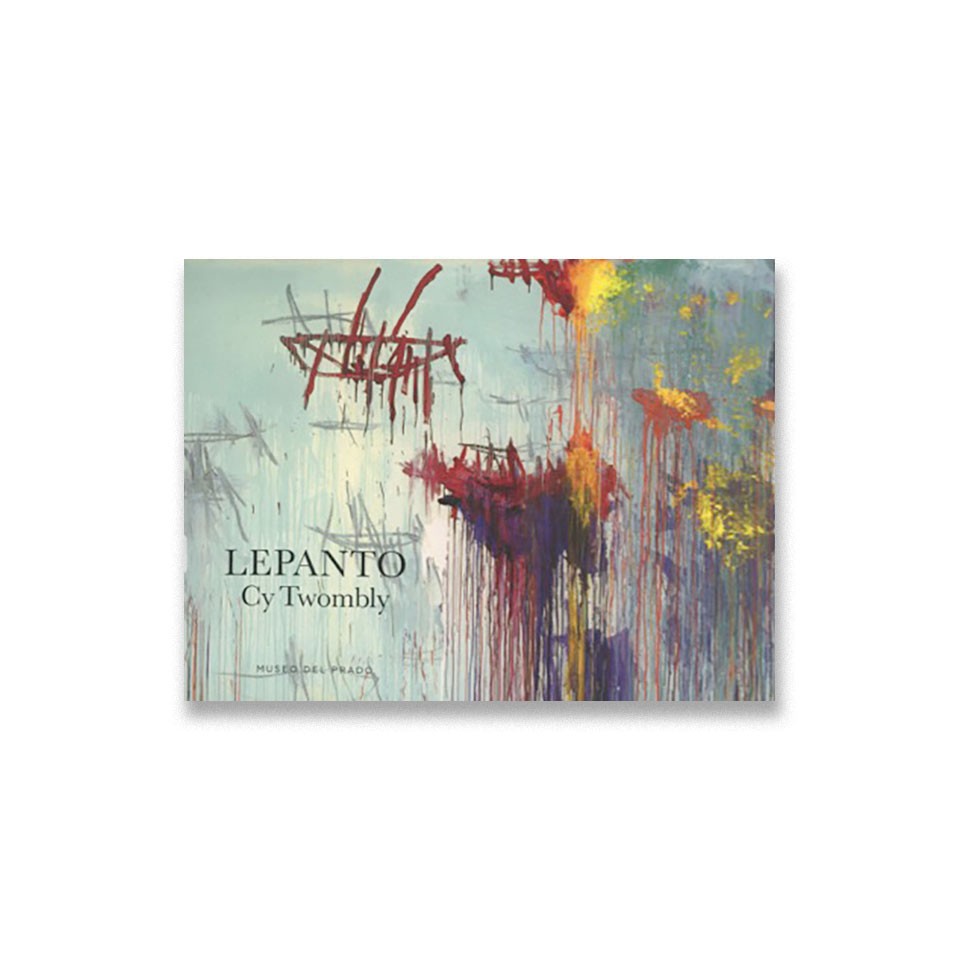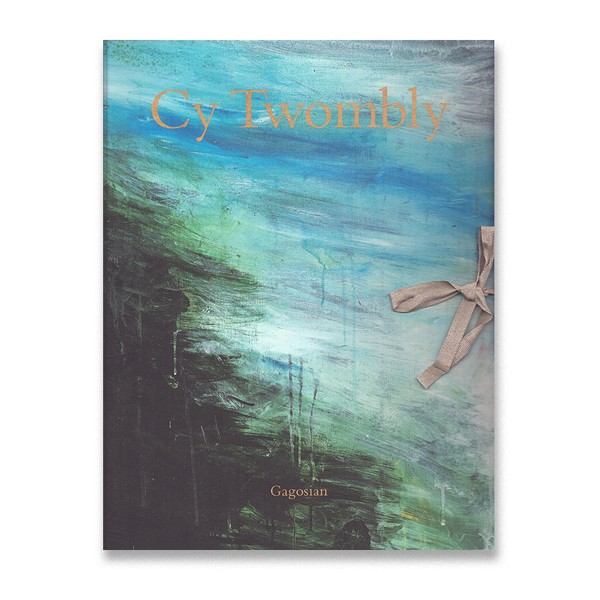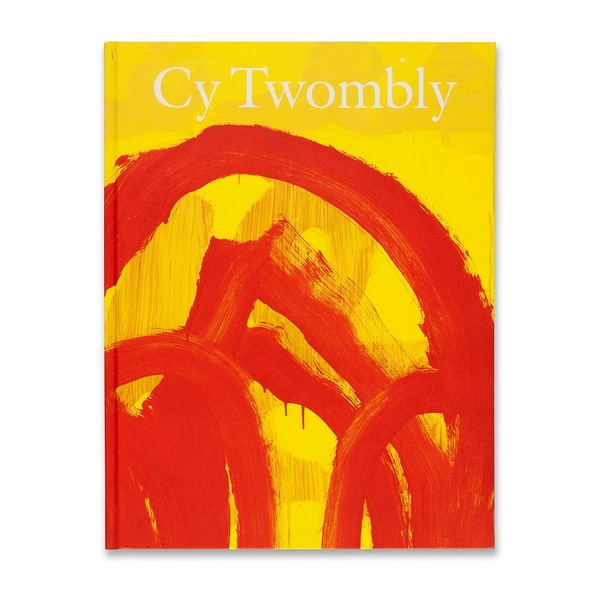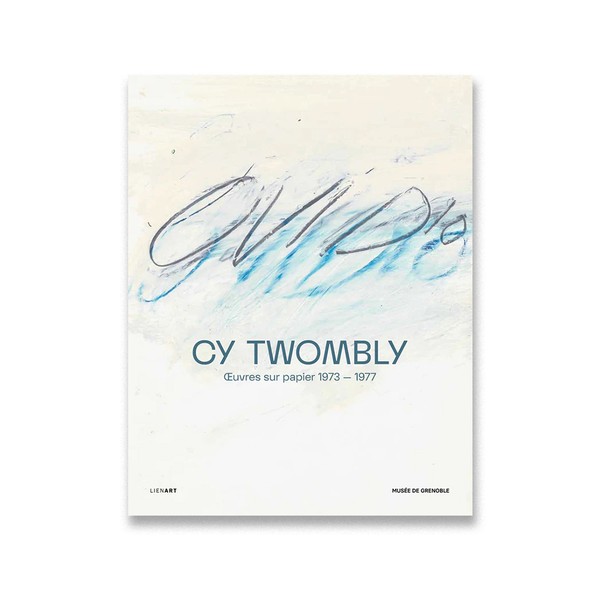Lepanto
Cy Twombly

This exhibition catalogue was published on the occasion of the final exhibition of Twombly’s Lepanto (2001) before its permanent installation at the Museum Brandhorst, Munich. It includes essays by Alejandro Vergara and Kirk Varnedoe. It also includes a brief preface from Miguel Zugaza, which primarily narrates the history of the 1571 battle of Lepanto to which the painting cycle responds. All text is published in Spanish and English.
Vergara seeks to situate Lepanto in the context of the broader collections of the Museo del Prado, focusing particularly on war as a subject of history paintings. He draws on figures in the Museo del Prado’s collection in whom Twombly maintained an interest such as Titian and Tintoretto. Vergara characterizes Twombly’s cycle as “cartographic” (“cartográfico”) (7) and emphasizes Twombly as operating in continuity with the tradition he invokes.
Varnedoe emphasizes the battle of Lepanto as a dramatic event and as a highly contingent one, stressing that the ultimately decisive battle easily could not have occurred at all. He offers a detailed historical account of the various factors leading to the battle and shaping its outcome. Varnedoe then situates Twombly’s selection of the subject in the context of his invitation to participate in the 2001 Venice Biennale, his military hometown of Lexington, Virginia, and his immersion in “the collisions and overlaps of opposing cultures around the Mediterranean” (33) by virtue of relocating to Italy. He notes military themes throughout Twombly’s practice and presence of a U.S. Navy base in Gaeta, asserting that “though the paintings were actually made in Lexington—[Lepanto] derives from the experience of Gaeta, on the coast between Rome and Naples” (33). He offers a thorough formal analysis of the cycle, finding that “it is long ago death that Twombly calls to present life” (36). In his coda, Varnedoe reflects on the significance of the battle of Lepanto as contemporary subject, insisting on its continued relevance because “[s]eemingly moribund events like those at Lepanto rise up and bite our backsides, while for all our hopes and fears— about the demise of painting or anything else—the jury is always, permanently out” (36).
Scholars researching Twombly’s Lepanto cycle should consult this volume alongside the Gagosian exhibition catalogue, Cy Twombly: Lepanto, which includes an essay by Richard Howard.
(Publication description by Jamie Danis)
Published on the occasion of the exhibition Lepanto. Cy Twombly at the Museo Nacional del Prado, Madrid (June 26 – September 28, 2008). This was the series' last exhibition before it was definitively installed at the Museum Brandhorst in Munich.
Lepanto. Cy Twombly. Texts by Miguel Zugaza, Alejandro Vergara, Kirk Varnedoe. Published by Museo del Prado, Madrid, 2008. Fully illustrated. Spanish/English edition.



